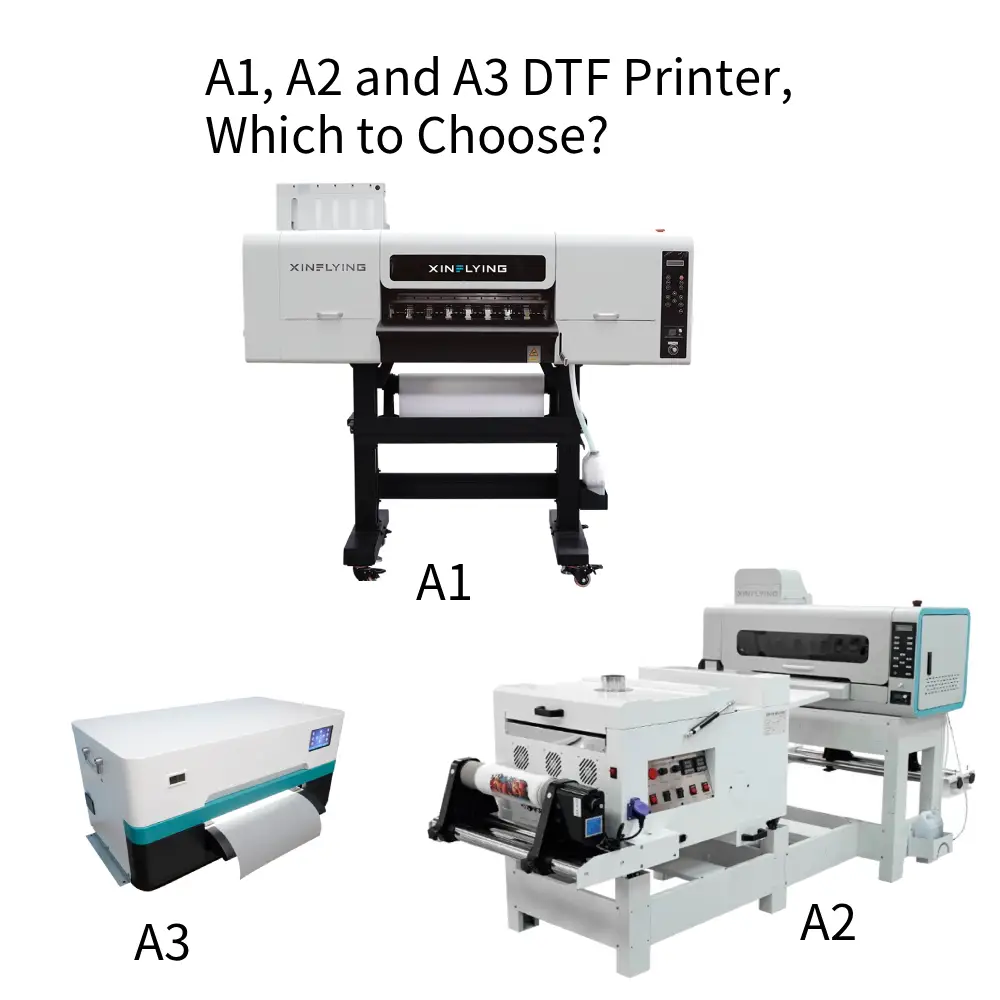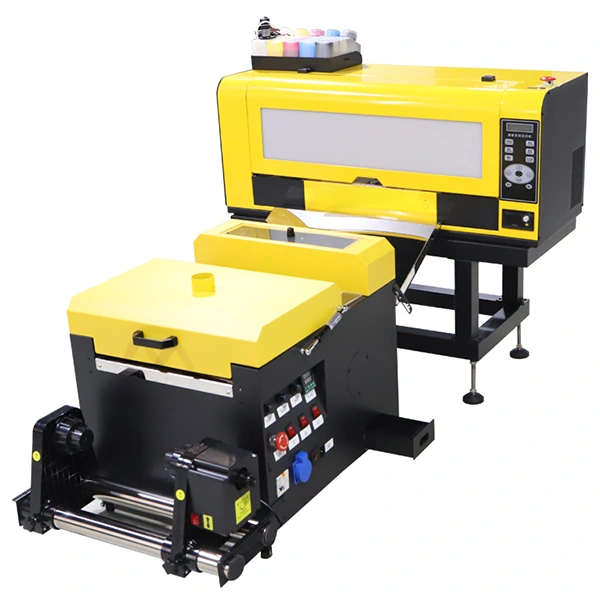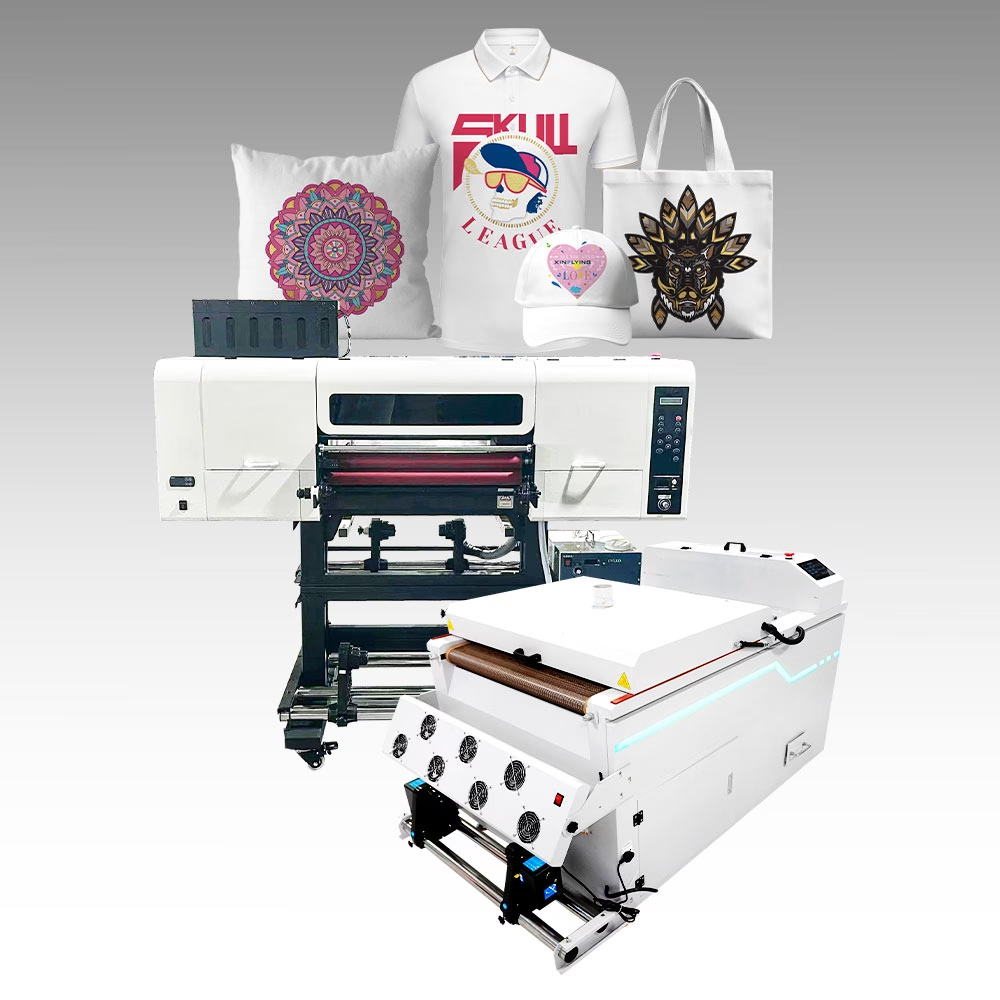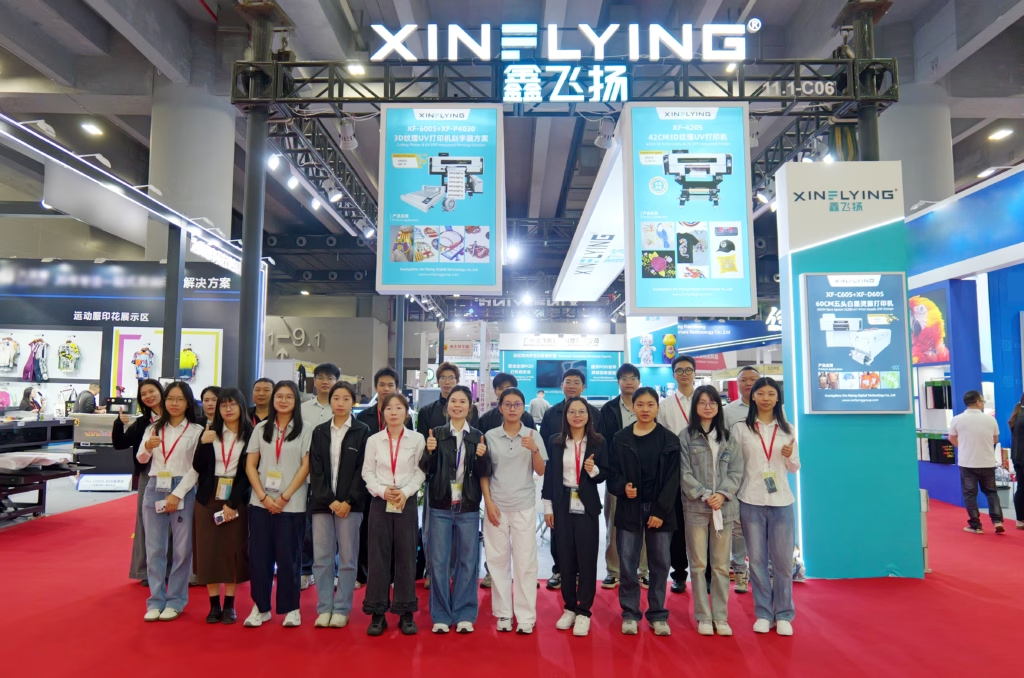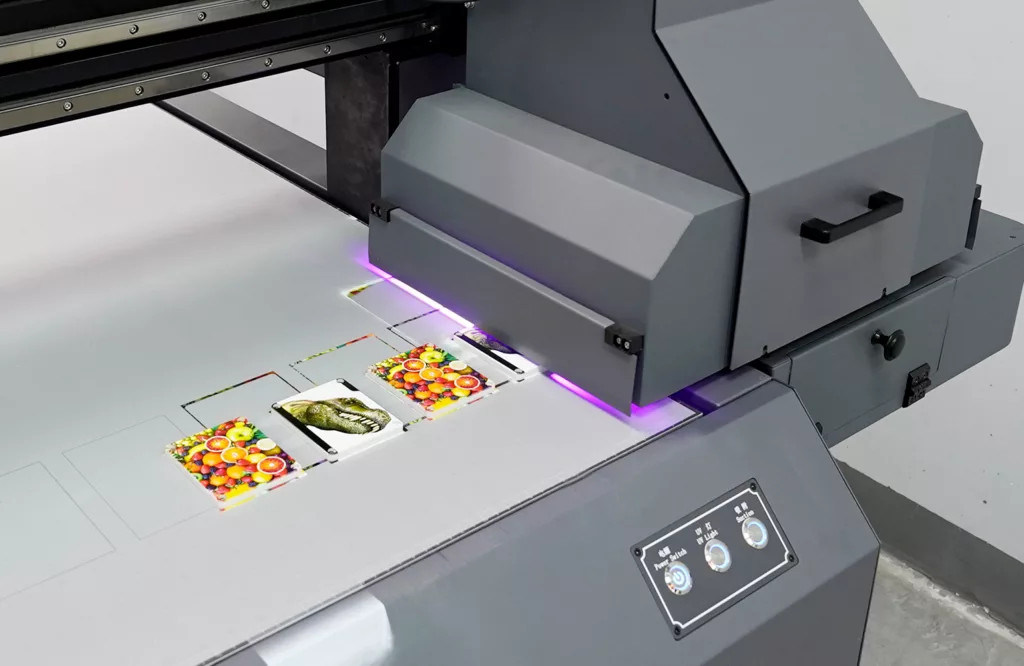
Manba: https://www.silhuetteschoolblog.com
Raqamli bosib chiqarish kiyim-kechak va to'qimachilik sanoatini inqilob qildi, biznesni taklif qilish, yuqori sifatli va moslashtirilgan mahsulotlarni osonlikcha ishlab chiqarish imkoniyati.
DTF bosib chiqarish va sublimatatsiyani bosib chiqarish - bu keng tarqalgan foydalanishga ega bo'lgan ikkita mashhur raqamli bosma usul usulidir. Ikkala texnologiya ham bir nechta afzalliklarni taklif qilishadi, Ikkala o'rtasida sezilarli farqlar mavjud.
Ushbu maqolada, Biz taqqoslaymizDTF Printya'ni vaSublimatsiya Printya'ni va ularning afzalliklarini o'rganing, cheklash, va turli xil bosib chiqarish ehtiyojlari uchun yaroqliligi.
Biz uni umuman hazm qilish mumkin, Shunday qilib, siz nihoyat ishonchli bosib chiqarish usulini qat'iyan tanlashingiz mumkin, bu sizning biznes ehtiyojlaringiz bilan eng yaxshi mos keladi. Kichik biznes yoki keng ko'lamli ishlab chiqaruvchisiz, Ushbu maqolada sizning bosib chiqarish ehtiyojlaringiz uchun to'g'ri tanlov qilishda yordam beradi.
[Stol] DTF matbaa va sublimatsiya matbaa o'rtasidagi farqlar qanday?
| Taqqoslash | DTF bosib chiqarish | Sublimatsiya bosib chiqarish |
| Ishqiboz | 1. Kompyuterda dizayn 2. Uy hayvonlari filmida chop etish 3. Yopishqoq kukunli siyohni davolash 4. Dizaynni o'tkazish uchun issiqlikni bosing | 1. Kompyuterda dizayn 2. Sublimatatsiya qog'ozini chop eting 3. Dizaynni o'tkazish uchun issiqlikni bosing |
| Material | Keng matolarning keng ko'lami, shu jumladan paxta, poliester, va aralashtiriladi | Poliester yoki poliester bilan qoplangan materiallar, kiyim-kechak, bannerlar, va reklama buyumlari. |
| Chop etish sifati | Yuqori sifatli va batafsil bosma nashrlar, yanada faol va batafsil bosma nashrlar | Yuqori sifatli va batafsil bosma nashrlar |
| Ishlab chiqarish samaradorligi | Tezroq burilish vaqti va samaraliroq ishlab chiqarish | Oz miqdorda kostyum |
| Narxi | Qimmat | Xarajatlari, ammo oz miqdordagi maxsus mahsulotlar uchun arzon |
DTF vs sulmamatsiya taqqoslash jadvali
DTF bosib chiqarish nima?

Manba: https://www.brildor.com
DTF (To'g'ridan-to'g'ri filmga) bosib chiqarish - bu raqamli bosib chiqarish texnologiyasi bu yuqori sifatli va batafsil dizaynlar to'g'ridan-to'g'ri transfer plyonkalariga bosilishi mumkin, Keyinchalik dizaynni matoga o'tkazish uchun ishlatilishi mumkin.
DTF bosib chiqarish dtg ga o'xshaydi (To'g'ridan-to'g'ri kiyim) chop etish, lekin to'g'ridan-to'g'ri matoni bosish o'rniga, Dizayn transfer plyonkasiga bosilgan, keyinchalik issiqlik matbuotidan foydalanib matoga qo'llaniladi.
DTF-ni qanday bosib chiqarish ishlaydi?
DTF bosib chiqarish texnologiyasi ixtisoslashgan holda transfer plyonkasiga bosib chiqarish uchun mo'ljallangan ixtisoslashgan printerdan foydalanadi DTF siyohs. Printer siyohni transfer plyonkasiga tegishli, keyin qavat bilan qoplangan DTF kukuni.
The DTF film keyin mato ustiga joylashtiriladi va issiqlik pressidan foydalaniladi. Issiqlik DTF kukuni eritadi, bu siyohni mato tolalariga qo'yadi, natijada yuqori sifatli va bardoshli chop etiladi.
DTF bosib chiqarishning afzalliklari
DTF bosib chiqarish an'anaviy tarzda bir nechta afzalliklarni taklif etadisublimatsiya bosib chiqarish usul, shu jumladan:
- DTF bosib chiqarish keng matolarni bosib chiqarish qobiliyatini taklif qiladi, shu jumladan paxta, poliester, va aralashtiriladi.
- U uzoq davom etadigan va yuvish va yuvishga chidamli jonli va chidamli bosma nashrlarni ishlab chiqaradi.
- DTF antianatsiyasining an'anaviy Sublimulyatsion usullari bilan taqqoslaganda tezroq burilish vaqtini va yanada samarali ishlab chiqarishni taklif etadi.
- DTF bosib chiqarishi kengroq mahsulot turini chop etish qobiliyatini taklif qiladi, shu jumladan poyabzal, bosh kiyimlar, va sumkalar.
DTF bosib chiqarishning cheklanishi
Ko'p qirrali, DTF quyidagicha cheklovlarga ega:
- Cheklangan substrat mosligi – DTF bosib chiqarish paxta kabi ba'zi matolarga eng yaxshi ishlaydi, poliester, va paxta / pol aralashishi. U ro'molcha ta'sir qilmasligi yoki neylon yoki teri kabi boshqa materiallarga kerakli natijalarni keltirib chiqarishi mumkin.
- Yorilish yoki so'nish imkoniyatlari;
- Yorug'lik matolari uchun oq osti oqi;
- Katta tartib hajmi uchun ideal emas;
- Cheklangan darajada.
Sublimatsiya bosib chiqarish nima?

Manba: https://www.alpreedeads.com
Sublimatatsion bosib chiqarish - bu raqamli bosib chiqarish usuli bu materialni materialga o'tkazish uchun issiqlik va bosimni ishlatadi, Odatda poliester yoki poliester bilan qoplangan mahsulotlar.
The process involves printing the design onto sublimation paper using specializedsublimatsiya siyohs, which are then transferred onto the material using a heat press.
SuBlimulyatsiyani qanday bosib chiqarish ishlaydi?
Sublimation printing works by using heat to convert the ink into a gas, which then bonds with the material’s fibers. This process results in a durable and long-lasting print that is resistant to fading, peeling, and cracking.
Sublimation printing is commonly used to print on a variety of products, shu jumladan libos, bannerlar, tabel, va reklama buyumlari. It is a popular choice for businesses that require full-color printing and customization of small quantities.
SuBliatsion bosib chiqarishning afzalliklari
- Sublimation printing produces vibrant and detailed prints that are long-lasting and resistant to fading and washing;
- It is a versatile printing method that can print on a wide range of products, kiyim-kechak, bannerlar, va reklama buyumlari;
- Sublimatatsion bosib chiqarish oz miqdordagi maxsus mahsulotlar uchun qulay bosib chiqarish usuli.
- Bu nozik tafsilotlar va gradyanlar bilan to'liq rangli bosma nashrlarni ishlab chiqarish imkoniyatini beradi.
Sublimatatsiyani bosib chiqarish cheklovlari
- Poliester yoki polimer bilan qoplangan substratlar bilan cheklangan – Sublimatatsiya matoni pikzaxon mato kabi poliester qoplamasi yoki yuqori poliester bo'lgan materiallar bilan ishlash. Uni tabiiy tolalarda paxta yoki choyshab kabi ishlatib bo'lmaydi.
- Bo'yash yoki sharpa.
- Murakkab mahsulotlar uchun mos emas – Ko'p tikanlar bo'lgan mahsulotlar, tizmalar yoki notekis yuzalar mos kelmaydigan subtimulyatsiya natijalarini keltirib chiqarishi mumkin.
- Ishlab chiqarish vaqti boshqa bosib chiqarish usullariga nisbatan nisbatan vaqtni sarflash.
Bu sizning biznesingiz uchun yaxshiroq, DTF yoki SUBLIATATSIYA BOSHQARMASI?

Manba: https://www.shutthock.com
Sizning biznes ehtiyojlaringiz uchun raqamli bosib chiqarish usulini tanlash haqida gap ketganda, Bir nechta omillar e'tiborga olinadi.
Ko'rish uchun omillar
Sizning biznes ehtiyojlaringiz uchun qaysi matbaa usulini eng yaxshi deb qaror qilganda, Quyidagi omillarni ko'rib chiqing:
- Mato / material
Agar siz keng matolarni bosib chiqarishingiz kerak bo'lsa, shu jumladan paxta, poliester, va aralashtiriladi, DTF-ni bosib chiqarish yaxshiroq variant bo'lishi mumkin. Biroq, Agar faqat poliester yoki poliester bilan qoplangan materiallarni chop etish kerak bo'lsa, Sublimatatsiya matbaa bo'lishi ko'proq mos kelishi mumkin.
- Chop etish sifati
DTF ikkalasida ham bosib chiqarish yuqori sifatli va batafsil bosma nashrlar. Biroq, DTF bosib chiqarish subtilatsion bosib chiqarish bilan solishtirganda ko'proq jonli va batafsil bosma nashrlarni taklif qilishi mumkin.
- Ishlab chiqarish samaradorligi
DTF bosib chiqarish tezroq burilish vaqtini va SuBlimulyatsiyani bosib chiqarish tezroq ishlab chiqarishni taklif qiladi.
- Narxi
DTF ikkalas ham Ixtisoslashgan uskunalar va sarf materiallarini talab qiladi, Bu qimmat bo'lishi mumkin. O'zingizning biznes ehtiyojlaringiz uchun qaysi usul eng yaxshisini tanlashda o'zingizning byudjetingizni va bir nechta bosma mahsulotingizni hisobga oling.
DTF ni bosib chiqarish bo'yicha tez-tez beriladigan savollar. Sublimatsiya bosib chiqarish
1. DTF bosib chiqarish uchun sizga nima kerak?
DTF (To'g'ridan-to'g'ri filmga) O'tkazma DTF filmiga dizaynni o'z ichiga oladi, keyin yopishtiruvchi yordamida substratga o'tkaziladi. Siz bularni DTF bosib chiqarish uchun kerak:
- DTF printer
- Issiqlik matchisi
- DTF siyoh
- DTF uy hayvonlari filmi
- Dtf yopishtiruvchi kukun
2. Sublieatsion bosib chiqarish uchun sizga nima kerak?
Sublimatsiya uzatish subtimatsiya siyohidan foydalanib, SuBilatsiya uzatish qog'oziga dizaynni chop etishni o'z ichiga oladi. Sublimulyatsiyani chop etishdan oldin tayyorlang:
- SUBLIATSIYA Printer
- Sublimatsiya siyohi
- Sublimatsiya qog'oz
3. Siz DTF qog'ozidan SuBelatatsiya siyoh bilan foydalana olasizmi??
DTF qog'oz DTF siyohi bilan foydalanish uchun maxsus ishlab chiqilgan, Sublimatsiya siyohidan farq qiladi. Shuning uchun, DTF qog'ozidan SUBLIYATER siyohi bilan foydalanish tavsiya etilmaydi, chunki ular turli xil xususiyatlarga ega va ma'lum bir kompotetlarni talab qiladilar.
4. Sublimatsiya qog'ozi transfer qog'ozi bilan bir xil?
Sublimatsiya qog'oz - bu Sublimatsiya bosib chiqarish uchun mo'ljallangan transfer qog'ozining turidir. Issiqlikni qo'llash orqali dizaynni substratga o'tkazish uchun ishlatiladi. Barcha sublimatsiya qog'ozlari uzatgichlar uzatiladi, Hamma transfer hujjatlari, albatta, sublimatsiya qilish uchun mo'ljallangan emas.
5. SuBelatatsiya qog'oziga DTF kukunidan foydalana olasizmi??
DTF kukuni DTF bosib chiqarish jarayonida dizayn va substrat o'rtasidagi yopishish uchun ishlatiladi. Bu odatda submalitatsiya qog'ozi yordamida qo'llanmada bosib chiqarish siyohning gazga aylanishi va materialni o'rnatishga tayanadi, Yopish uchun kukun ishlatishdan ko'ra.
6. DTF bosib chiqarish uchun Subliatsiya siyohidan foydalanishingiz mumkin?
Yo'q, Sublimatsiya siyohi DTF bosib chiqarish uchun to'g'ridan-to'g'ri foydalanilishi mumkin emas. DTF siyohi DTF bosib chiqarish uchun yaratilgan siyohning o'ziga xos turidir, Sublieatsion siyoh boshqa bosma chop etish uchun mo'ljallangan bo'lsa-da.
7. Dtf siyohli siyoh bilan bir xil?
Yo'q, DTF siyohi SuBliatsion siyoh bilan bir xil emas. Ularda turli xil kompozitsiyalar va xususiyatlarga ega, ularning bosma nashrlari uchun moslashtirilgan. DTF siyohi, keyinchalik kiyim-kechaklarga o'tkazilgan filmda chop etish uchun ishlatiladi, Sublimatatsiya siyohi siyoh gazga aylanadigan va matolarga ta'sir qiladigan jarayon uchun ishlatiladi.
Kalit Takeaway
So'ngida, DTF bosib chiqarish va submalementni bosib chiqarish - bu o'zlarining noyob kuchli kuchi va cheklovlari bilan ikkita hayotiy bir raqamli bosib chiqarish usullari. Qaysi matchani tanlash usulini tanlashda, korxonalar o'zlarini ko'rib chiqishlari kerak Muayyan bosib chiqarish ehtiyojlari, byudjet, va kerakli bosib chiqarish sifati.
Kabi Printer ishlab chiqaruvchisiS Ushbu texnologiyalarni faollashtirishni davom ettirish, Tadbirkorlar so'nggi ishlanmalar haqida xabardor bo'lishlari kerak. Sizning talablaringizga nisbatan har bir usulning ijobiy va salbiy tomonlarini sinchkovlik bilan tortish, sizga ideal raqamli bosib chiqarish echimini tanlashni ta'minlaydi. DTF ham, sublimatatsiyadan chiqish ham to'g'ri bajarilganda yuqori sifatli moslashtirilgan mahsulotlarni keltirib chiqarishi mumkin.
Bosib chiqarish operatsiyalarini keyingi bosqichga o'tkazishga tayyor? Jamoamiz bilan bog'laning noyob ehtiyojlaringizni baholash va biznes maqsadlari uchun eng yaxshi DTF yoki Sublimatsiya sozlamalari bo'yicha mutaxassislar.



























